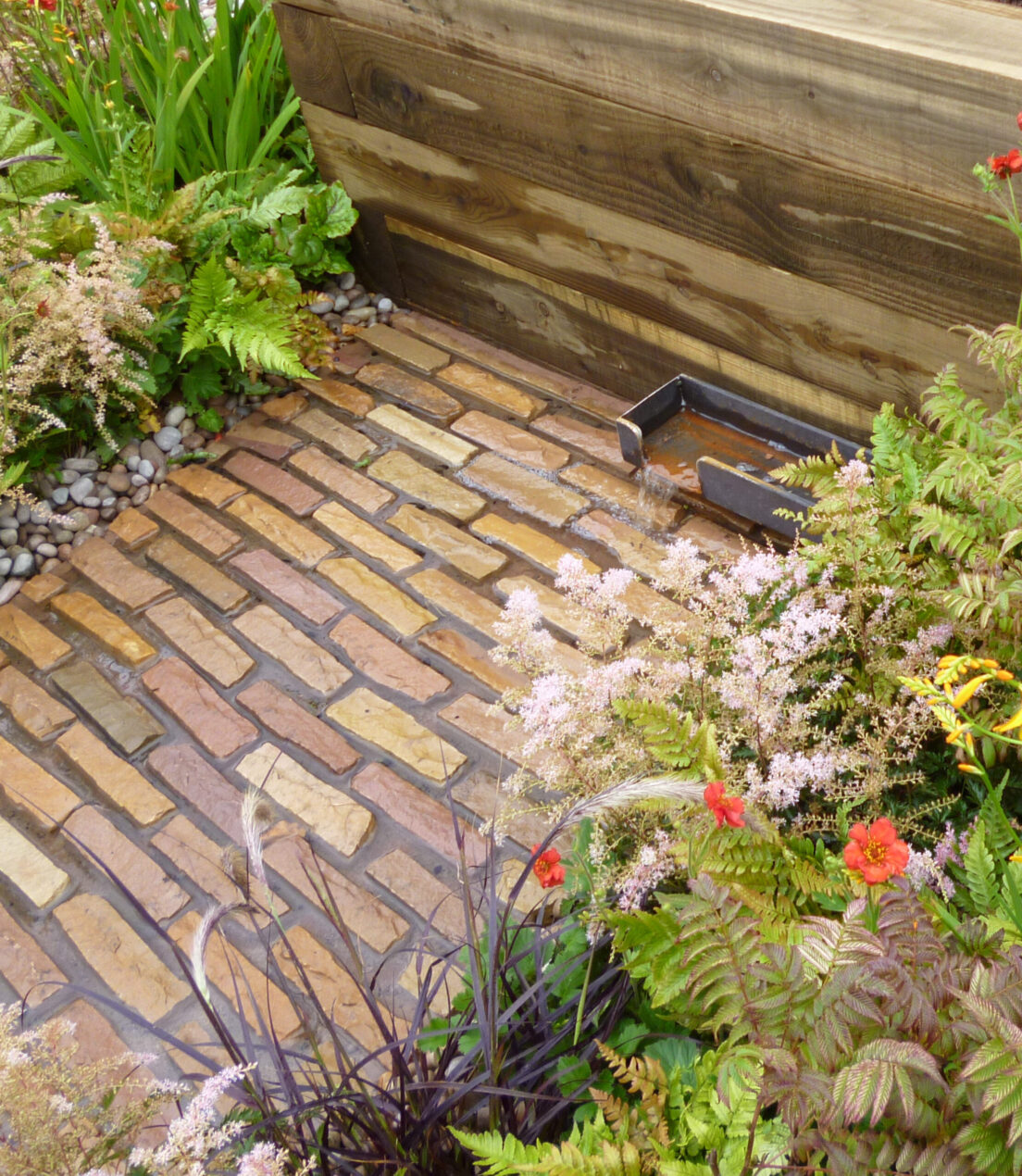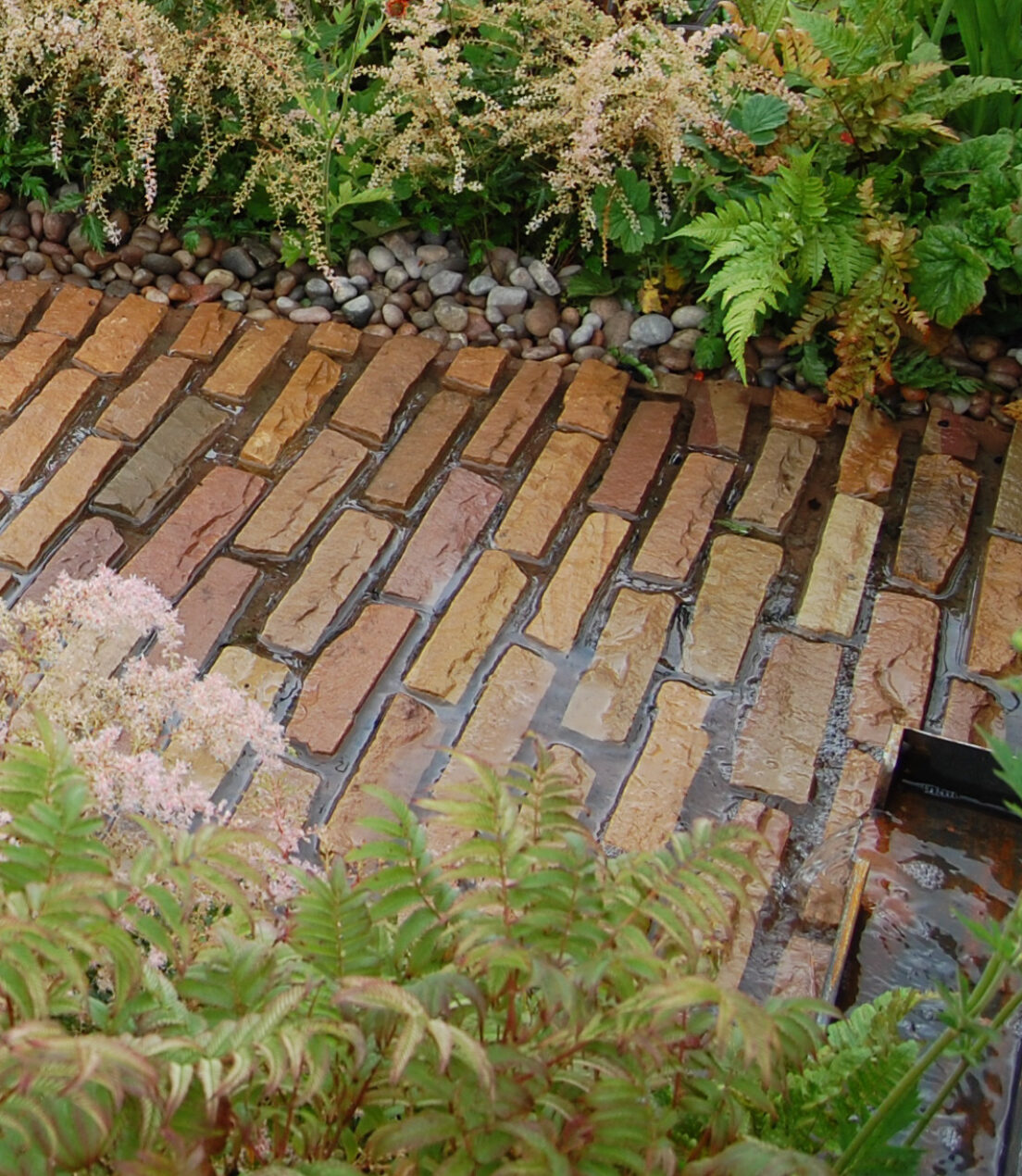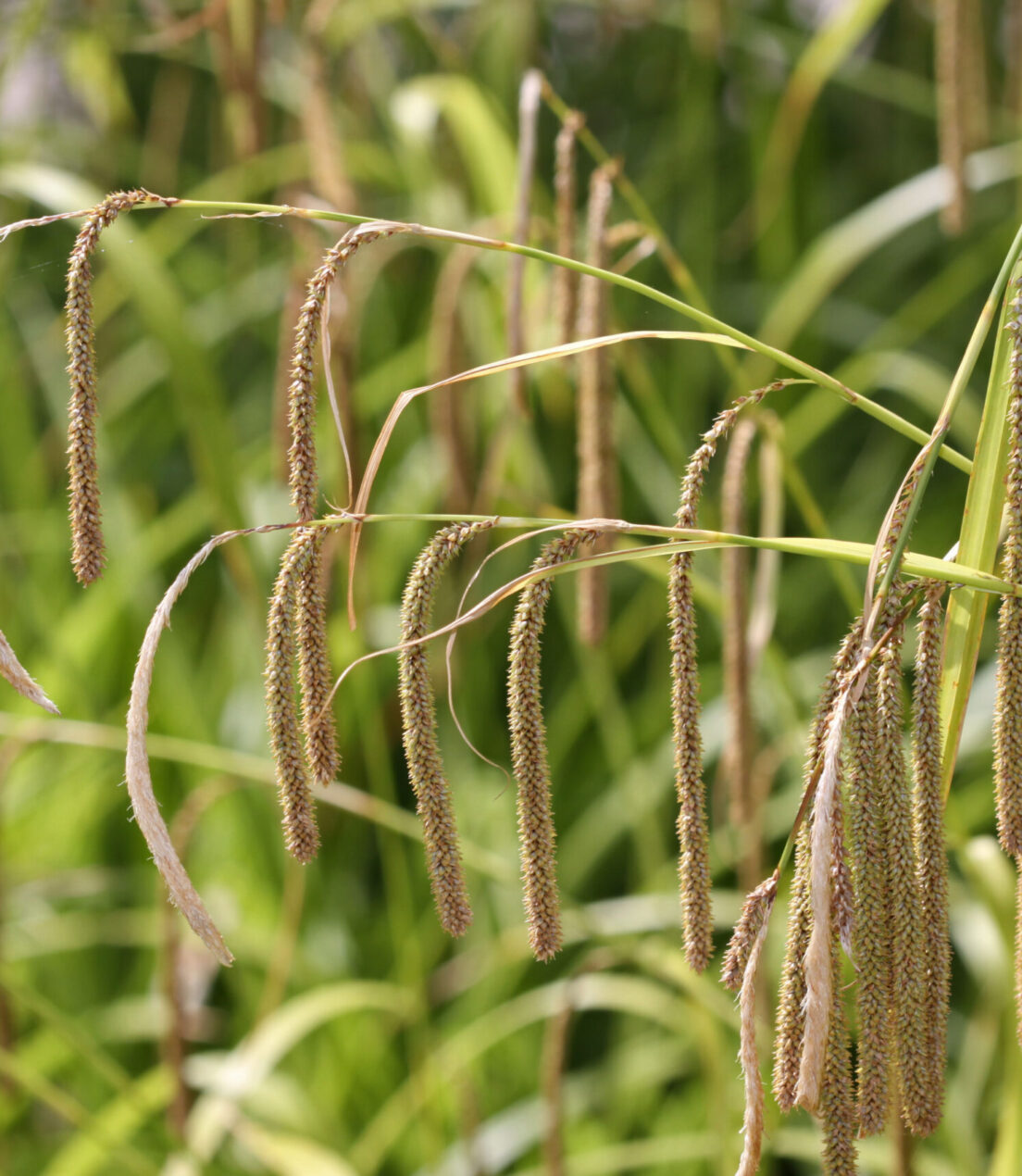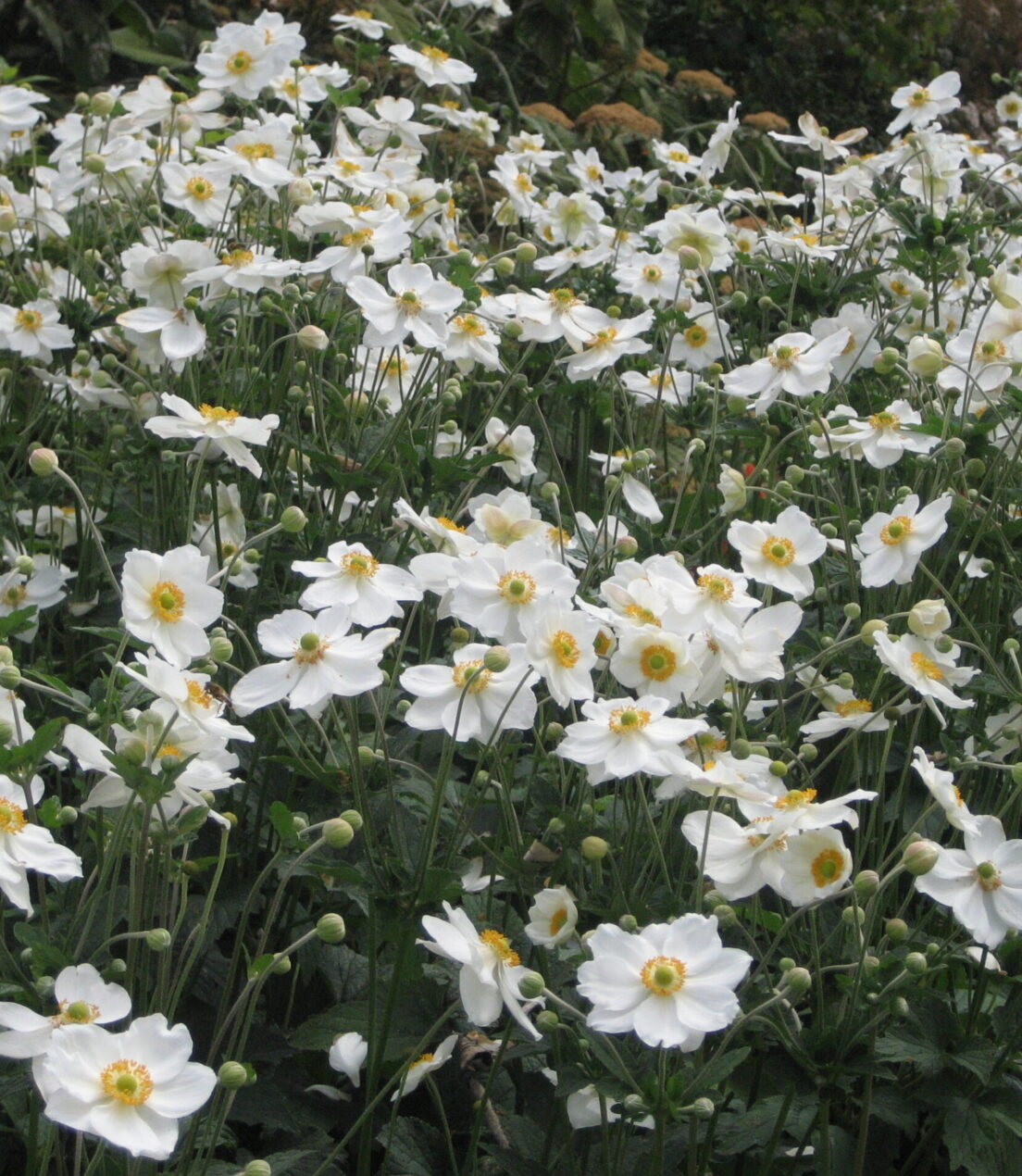

What is a rain garden ?
A rain garden is a planted area designed to reduce the amount of water running off into drainage systems. It works by slowing down the flow of water giving the soil and plants time to absorb as much as possible, by slowing the water down it minimises the impact of high rain fall giving the wider water distribution system time to cope and reducing the risk of flash flooding.
The construction of a rain garden varies hugely in its complexity, with the absolute basic being the redirecting of a water down pipe into an adjacent border, to a sophisticated SuDS scheme with carefully calibrated water flow rates and control valves.
Within the domestic landscape, rain gardens can be used to manage the surface water which is created by rain falling onto roofs, patios and paths thus reducing the need to install often costly, underground drainage systems. This has the effect of also reducing the amount of water entering the sewerage network which often becomes overwhelmed during storm events and directly contributes towards the pollution of rivers and streams.
If the garden is expected to receive a high volume of water and is not expected to be able to soak away the full volume then a drainage system will still be required to remove the excess water.
What is SuD’s ?
Suds (Sustainable urban drainage systems) use planting and natural features to manage drainage instead of pipes and tanks (Sometimes called water sensitive urban design). This usually involves planting but can include permeable paving and French drains. The whole system should be made up of connected features including source control (like green roofs) and overflow provisions, and each feature should have an outlet control limiting the speed at which water can leave.
Rain gardens as a feature of Suds should therefore have a channel or expected path for water to flow in, and an outflow that may mean water is retained temporarily at peak storm events and then allowed to leave gradually.
The principles at work are that, during high rainfall events, water is directed into planted areas where it is then captured, stored and cleaned by the plants’ naturally processed before being slowly released into the wider environment through normal soil drainage mechanisms.
What plants to choose ?
It is easy to assume that we would choose a range of bog and moisture loving plants to plant in a rain garden but this is almost the opposite of where we should be looking. 80-90% of the time a rain garden will experience almost drought like conditions and plants such as Astilbe, Lythrum and Rodgersia would never really thrive in this environment.
The plants we choose need to have fibrous root systems to protect the soil surface and to hold it together during wet periods. They need to be tough and able to withstand an inundation of water but also be able to survive the dry times. They should have adaptable reproductive strategies, creeping stoloniferous roots or the ability to self-seed into the gaps resulting from stress. Most importantly they should work together as a community to keep the soil surface covered and still look visually stunning.


Rain garden planting zones
The simplest form of rain garden will have a saucer shaped indentation with a flat base using the soil to create a gentle slope to retain the water. The areas at the base of the rain garden and those close to the inlet area will be the slowest to drain so these areas will be more suitable for more moisture loving plants. The areas close to the edges, at the furthest point away from the inlet and on the sides of the slope will be more suited to the drought tolerant species.
Final considerations should be vertical structure and seasonal interest. You need plants that work at ground level and herbaceous plants that work at a low-medium height. This can then be easily maintained by an annual cut back and reduces the possibility of having sulking woody perennials which are neither happy in the dry or wet conditions.
Early seasonal interest can be introduced with bulbs like Fritilaria meleagris and Camassia leichtlinii which are natives of wet grasslands and the use of structural grasses will ensure that the texture of overwintering leaves gives pleasure throughout the winter right up to the February cut back.
